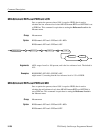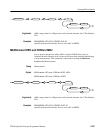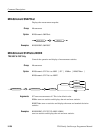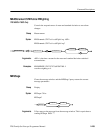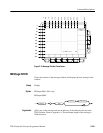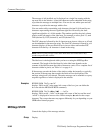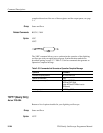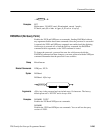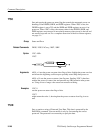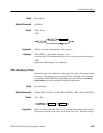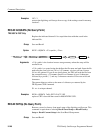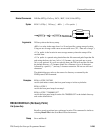
Command Descriptions
2–242
TDS Family Oscilloscope Programmer Manual
The message is left-justified, and is displayed on a single line starting with the
top most line in the window. A line feed character can be embedded in the string
to position the message on multiple lines. You can also use white space and tab
characters to position the message within a line.
You can send a tab by transmitting a tab character (decimal 9) followed by two
characters representing the most significant eight bits followed by the least
significant eight bits of a 16-bit number. The number specifies the pixel column
relative to the left margin of the label area. For example, to tab to pixel 13, send
TAB (decimal 9), NUL (decimal 0), and CR (decimal 13).
The ESC character followed by the @ character turns inverse video on or off and
can be embedded in the message string. The first ESC character followed by a @
character displays all the text that follows in inverse video until another ESC
character followed by a @ character is found in the string.
NOTE. The use of any escape codes other than those described above may
produce unpredictable results.
The label area is the height and width you have set using the MESSage:Box
command. The length of the label that fits in the label area depends on the
contents of the label because the width of characters varies. For a complete list of
character widths in pixels, see Table A–1 on page A–1.
If the message exceeds the limits of the window, either horizontally or vertically,
the portion of the message that exceeds the limits will not be displayed. The
message string itself is not altered. The entire message can be returned as a query
response regardless of what is displayed in the window.
MESSAGE:SHOW "Hello world"
displays “Hello world” in the upper left corner of the box (you can define the
box size with the MESSAGE BOX command).
MESSAGE:SHOW "Hello a@worlda@ ... hello
displays “Hello world ... hello” in the upper left corner of the box and the word
“world” is displayed in inverse video. In this example, a stands for the escape
character. The escape character may appear differently for you depending on your
GPIB talker-listener program.
MESSage:STATE
Controls the display of the message window.
Display
Examples
Group





